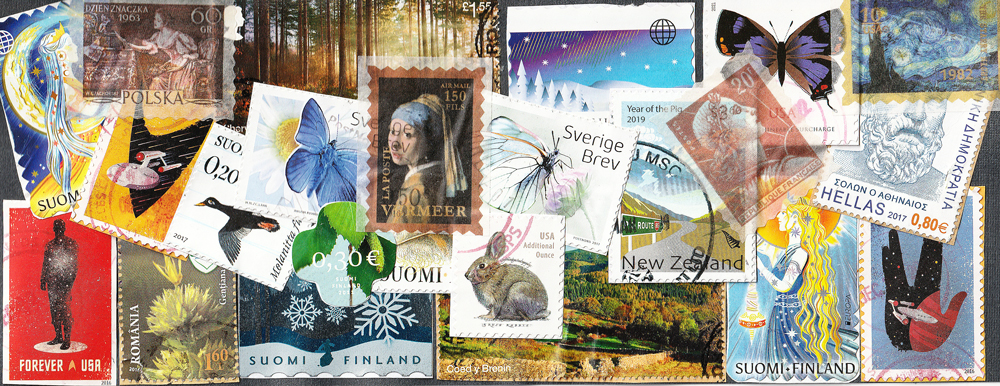
The band L’Ham de Foc was iniciated by Efrén López and Mara Aranda in 1998. After composing their first material they were invited by the INJUVE (Institute for Spanish Youth Culture) to participate in the yearly tour through various Spanish cities. The live setup required more musicians so L’Ham de Foc was founded after the band grew up to 7 members.
Shortly after that, the musicians got in contact with the independent label Sonifolk and in August of 1999 the first CD “U” (Sonifolk, 2001) was released. With the help of the new album, the band participated in several important Spanish world music and folk festivals.
After a long tour throughout Spain, Efrén López and Mara Aranda continued their musical investigation and moved to Greece for 6 months in order to learn more about traditional Greek music and to meet important musicians. The knowledge obtained during this trip was used in their second album, Cançó de Dona i Home (Sonifolk, 2002).
L’Ham de Foc was one of the leading groups of a new Folk movement in Spain, that worked the traditional roots into a new, modern music concept. But L’Ham de Foc’s work is not just a superficial look at its roots. The musicians’ intention was to go back to where things originally came from, to learn how to play instruments, techniques and interpretations from first hand. Mediterranean folk music, including their own Valencian music, Greek music and also music from India or Northern Africa, are main influences for L’Ham de Foc. This mixture was responsible for a widespread acceptance of their music.
To understand the group’s work, one needs to know some things about the special cultural situation of the Valencian region. During the history of the southern Spanish coast, different cultures settled down, imposing their cultural roots. Due to its harbors, southeastern Spain was an important place for trading and the result was a permanent cultural exchange.
Musically spoken, three different zones have the strongest influence: The Arabic countries in the south. The tradition from Aragon and Castille in Spain, France and Italy denominated as the European zone. The central zone that is identified by a fusion of the north and the south. Hereto belong countries and regions like Greece, Andalusia, Yugoslavia, Albania, the Balearic Islands, Malta, Crete, Valencia, etc. These cultures are characterized by melismatic melodies, polyrhythms, double stringed instruments, wind instruments, quarter tone harmonies, and by the presence of the Arabic culture throughout 700 years.
The Musicians:
Diego López (Darbuka, Rig, Didjeridu, Bendir, Snare Drum, Cántaro and Tabla) – He started his career as a drummer in various rock, folk and singer-songwriter bands and found his interest more and more in traditional percussion instruments. He studied Indian tabla with Sazed Ul Alam and took part in workshops given by Glen Velez.
Eduardo Navarro (Dulzaina Gralla, Tarota, Baguet, Galician Bagpipe, Bulgarian Bagpipe, Chirimía, Crumhorn, Flute, Violin and Mandolin) – He started playing the laúd (Spanish lute) in traditional music groups and studied violin at the conservatory. Later, at the age of 16, rs he specialized in the Dulzaina reaching a master level. He was founder of traditional Valencian and Mediterranean groups like Llisa folk, Urbália Rurana, Tres Fan Ball and la Banda del Agredolç. He was also engaged in the cultural magazine “La Canya”. He later worked with the group Capella de Ministrers playing early music and was a permanent member of L’Ham de Foc.
Paco Bernal (Bendir, Crótalos, Snare Drum, Cajón and Cántaro)
He specializes fundamentally in Afro Cuban music and flamenco. He participated in several recordings with singer songwriters, Pop bands, Jazz artists, Salsa, Flamenco and African artists. He worked regularly with groups like Salpico, Burguitos, Miquel Gil, Ximo Tebar, Big Band Sedajazz, Sedajazz Latin Ensemble, Joan Soler and Ramón Cardo. He studied with Horacio “el negro” Hernández and Luís Dulzaides. He teaches percussion at the Conservatory in Valencia and at the Escuela de Música Creativa de Benimaclet.
Efrén López (Ud, Zanfona, Dulcimer, Bouzouki, Saz, Lauto, Trompa Marina, Gümbüs and Archilaúd) – He was one of the founders of L’Ham de Foc together with Mara Aranda. After playing the guitar in several projects he started to get into traditional music. As a session musician he recorded for more than 40 projects of different music styles. He’s switching now from guitar to traditional Mediterranean and antique instruments like double stringed instruments. With these instruments he recorded music for ads, documentaries and short movies. He studied the Zanfona with Pascal Leffevre, Maurizio Marttinotti and Nigel Eaton, Indian music with Krisna Mohann Batt, Sazed Ul Alam and Ajo y Chakrabarti and Turkish music with Ross Daly. Now he is sharing his time between L’Ham de Foc and the antique music ensemble Capella de Ministrers, which is touring continuously throughout Spain, Italy, France, Egypt, Croatia, Portugal, etc.
Mara Aranda (Tampura, Percussion, Classical Guitar, Vocals) – Mara was the composer of most of the music of L’Ham de Foc and also responsible for all lyrics. From the age of 16 she became a singer songwriter, fundamentally influenced by roots music and early music.
Discography:
U (Sonifolk, 1999)
Cançó De Dona I Home (Sonifolk, 2002)
Cor De Porc (Galileo MC, 2005)

